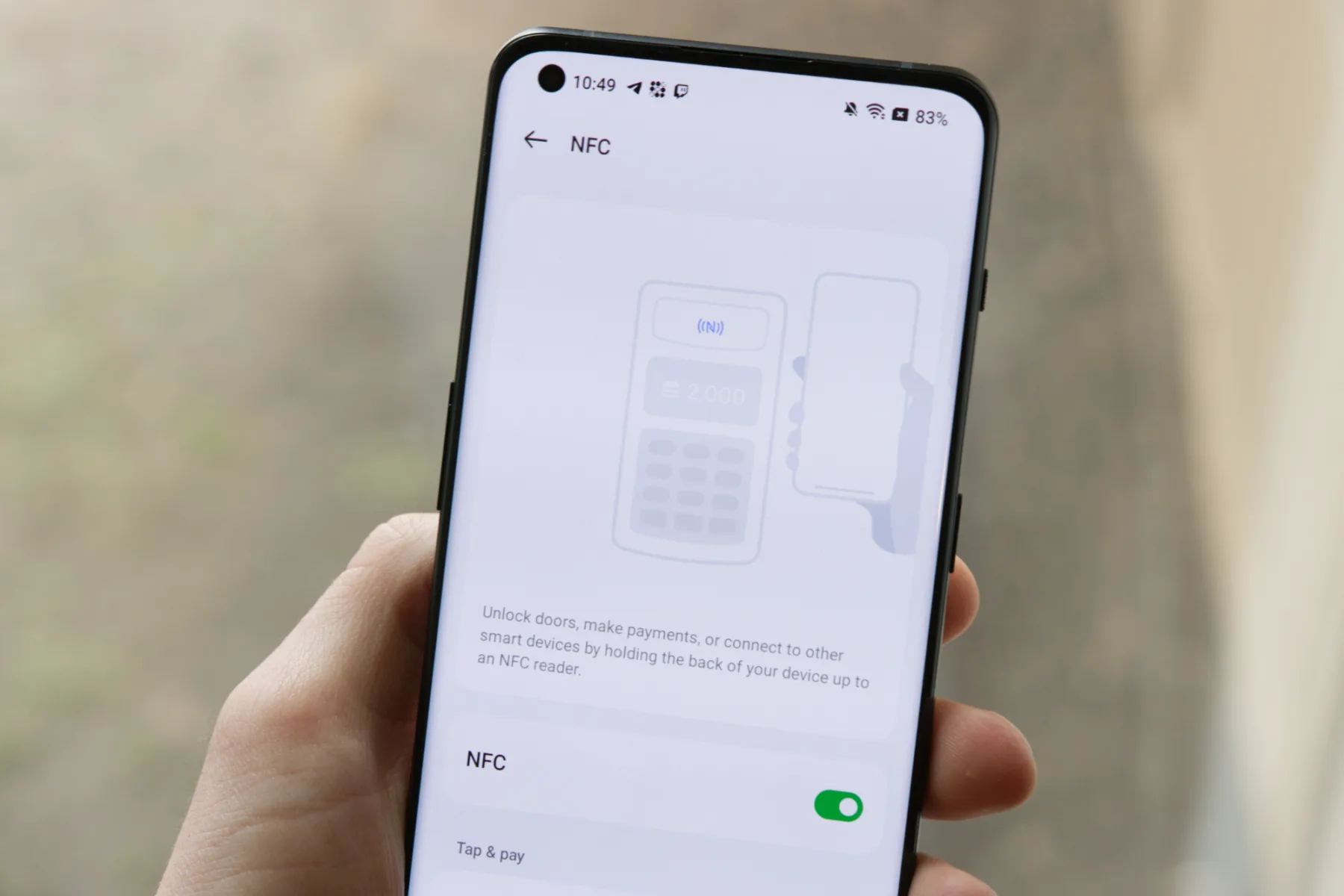In the world of mobile technology, security is of paramount importance. As we increasingly rely on our smartphones for various tasks, from banking to shopping, it becomes crucial to protect our personal and financial information from unauthorized access. This is where the SKMS Agent Service comes into play.
SKMS, short for Samsung KMS, is a client application specifically designed for Android devices to support eSE-based mobile-NFC services. It acts as a bridge between client applications and the SKMS (Samsung Key Management System) and facilitates communication between the SKMS and the embedded Secure Element (eSE) on the device.
The eSE is a hardware component embedded within your Android device that securely stores sensitive information such as payment credentials, authentication keys, and other cryptographic data. It provides a secure environment for executing sensitive operations, ensuring that your personal information remains safe and protected.
The SKMS Agent Service acts as an intermediary, managing the protocol between the SKMS and the eSE. It enables client applications to securely access and utilize the services provided by the eSE, such as mobile payment solutions, access control systems, or any other applications that require secure communication.
So, how does the SKMS Agent Service work? When a client application sends a request to access the services of the eSE, the SKMS Agent intercepts and forwards the command to the SKMS. The SKMS then processes the request and sends the appropriate response back to the SKMS Agent, which in turn relays it to the eSE for execution. This seamless communication ensures that the requested services are securely delivered to the client application.
One may wonder, why is the SKMS Agent Service so crucial? The answer lies in its ability to protect against potential threats and vulnerabilities. By mediating the communication between client applications and the eSE, the SKMS Agent ensures that only authorized and authenticated requests are executed. It verifies the integrity and authenticity of the client application before allowing access to the eSE, preventing malicious software from tampering with or accessing sensitive information.
The SKMS Agent Service plays a crucial role in protecting your personal and financial information on Android devices. By securely mediating the communication between client applications and the embedded Secure Element, it ensures that only authorized requests are executed, safeguarding your data from potential threats.

What is Samsung KMS Service?
Samsung KMS (SKMS) service, also known as Samsung Key Management System, is a client application designed for Android devices. Its main purpose is to support mobile-NFC (Near Field Communication) services that make use of the embedded Secure Element (eSE) technology.
SKMS Agent acts as a mediator between client applications and the SKMS platform, as well as between SKMS and the eSE. It facilitates the necessary communication protocols and ensures the secure transmission of commands from client applications to the SKMS and then to the eSE.
The SKMS Agent plays a crucial role in managing the interactions between different components of the NFC ecosystem. It handles the authentication and authorization processes for secure mobile transactions, such as contactless payments or access control. By acting as a bridge, it enables client applications to access the SKMS platform and utilize the services provided by the eSE.
The eSE, or embedded Secure Element, is a tamper-resistant hardware component embedded within the mobile device. It securely stores sensitive information, such as cryptographic keys and certificates, to ensure the confidentiality and integrity of mobile-NFC transactions. The SKMS Agent facilitates the communication between the client applications and this secure element, allowing for the secure execution of mobile-NFC services.
The Samsung KMS service, through the SKMS Agent, enables Android devices to securely support mobile-NFC services by managing the communication between client applications, the SKMS platform, and the embedded Secure Element. This ensures the secure execution of transactions and the protection of sensitive information.
What is the SVC Agent in Samsung?
SVC agent is a term used to refer to a specific type of Trojan that is commonly found on Samsung Android devices. This Trojan is typically installed by another malware source, such as a suspicious website or link.
Once installed on a device, SVC agent has the potential to cause various harmful effects. It can collect sensitive information from the device, such as personal data, login credentials, and financial details. This information can then be used for malicious purposes, such as identity theft or financial fraud.
Furthermore, SVC agent can also modify system settings and permissions, allowing it to gain control over the device and perform unauthorized actions. It may display intrusive ads, redirect web traffic, or even install additional malware onto the device.
To protect your Samsung device from SVC agent and other similar threats, it is important to follow good security practices. Here are some tips to keep your device safe:
1. Install a reputable antivirus or security app from a trusted source and keep it up to date. This will help detect and remove any malware, including SVC agent.
2. Be cautious when downloading apps or files from unknown sources. Stick to official app stores like Google Play Store and avoid downloading from suspicious websites or links.
3. Regularly update your device’s operating system and installed apps. Updates often include security patches that fix vulnerabilities that malware can exploit.
4. Avoid clicking on suspicious links or advertisements, especially those that promise unrealistic rewards or ask for personal information.
5. Enable the “Verify apps” option in your device’s settings. This feature scans apps for potential threats before installation.
6. Be mindful of the permissions requested by apps during installation. If an app asks for unnecessary permissions, consider whether it is legitimate or not.
By following these security measures, you can reduce the risk of SVC agent and other malware infecting your Samsung device and ensure a safer digital experience.
How Do You Uninstall SVC Agent?
To uninstall the SVC agent app from your device, please follow these steps:
1. Open the Settings Menu on your device. This can usually be accessed by tapping the gear icon in the app drawer or by swiping down from the top of the screen and tapping the gear icon in the notification shade.
2. Look for the “Apps” or “Applications” option in the Settings Menu and tap on it. This will open a list of all the apps installed on your device.
3. In the upper-right corner of the Apps screen, you should see an Options Menu, which is usually represented by three dots or vertical lines. Tap on this menu to open additional options.
4. From the Options Menu, select “Show System Apps” or “Installed Apps.” This will allow you to see all the apps, including system apps, that are installed on your device.
5. Scroll through the list of apps until you find the SVC agent app. The list may be in alphabetical order, so you can look for it manually or use the search function if available.
6. Once you locate the SVC agent app, tap on it to open the app details page.
7. On the app details page, you should see an “Uninstall” button. Tap on this button to initiate the uninstallation process.
8. A confirmation prompt may appear asking if you want to uninstall the app. Confirm your decision by tapping “OK” or “Uninstall” to proceed.
9. Depending on your device and the app, the uninstallation process may take a few moments. Once it is complete, you will receive a notification confirming the successful uninstallation of the SVC agent app.
Please note that the exact steps and terminology may vary slightly depending on the make and model of your device and the version of the operating system you are using.
What is SVC in Android?
SVC in Android stands for System Voice Command, which is a system process responsible for managing various services on the Android device. It is a crucial component that ensures the smooth functioning of the device and provides support for various features and functionalities.
Some key points to understand about SVC in Android include:
1. System Process: SVC is a system-level process that runs in the background on the Android device. It is part of the Android operating system and is responsible for managing and coordinating different services.
2. Service Management: SVC manages various services on the device, including system-level services, background processes, and system resources. It ensures that these services are properly allocated, controlled, and optimized for efficient operation.
3. Resource Allocation: SVC manages the allocation of system resources such as memory, CPU utilization, and network connectivity. It prioritizes and allocates resources to different services based on their requirements and importance, ensuring smooth multitasking and overall performance.
4. Service Coordination: SVC plays a crucial role in coordinating different services and processes on the device. It ensures that services interact and communicate with each other effectively, enabling features like notifications, background syncing, and system-wide functionality.
5. Voice Command Support: SVC also enables voice command functionality on Android devices. It provides the necessary infrastructure and support for voice recognition, processing, and executing voice commands. This allows users to interact with their device using voice commands, such as making calls, sending messages, or performing specific actions.
SVC in Android is a system process that manages various services, resources, and functionalities on the device. It ensures efficient resource allocation, service coordination, and supports voice command functionality. Its proper functioning is essential for the smooth operation of the Android device.
Conclusion
The SKMS Agent service is a client application specifically designed for Android devices to support eSE-based mobile-NFC services. It acts as an intermediary between client applications and the Secure Key Management System (SKMS) and facilitates communication between the SKMS and the embedded Secure Element (eSE) on the device.
The SKMS Agent is responsible for managing the protocol with the SKMS and forwarding SKMS commands to the eSE. This allows for secure and efficient execution of mobile-NFC services that rely on the eSE, such as contactless payments, access control, and ticketing.
However, it is important to note that the SVC agent, which is sometimes associated with the SKMS Agent, is a type of Trojan that can be installed on Android devices by other malware sources. If you come across the SVC agent on your device, it is recommended to uninstall it immediately to prevent any potential security risks.
The SKMS Agent service plays a crucial role in enabling secure mobile-NFC services on Android devices by facilitating communication between client applications, the SKMS, and the eSE.








